Here's an interesting debate to start the weekend! Should indie authors dispense with the weighty publishing industry directories that have long been a must-have for any author's bookshelf, like Writers' & Artists' Yearbook (UK) or The Writer's Handbook (US)?
In this post, Scottish indie author Ian Sutherland describes how becoming a self-published author made him rethink his addiction to the Writers' and Artists' Yearbook, published for over a century by Bloomsbury.
In the interests of balance, we've then invited the guide's editor, Alysoun Owen, to reply, and to explain how she and her team are addressing the rapidly changing marketplace.
While this particular Yearbook is aimed at the British market, we know there are many similar guidebooks around the world about which indie authors are having similar thoughts. Feel free to share your experiences of any handbooks of this kind via the Comments section. And please also note that ALLi's concerns about Bloomsbury's self-publishing services database have not yet been resolved.
Ian Sutherland, Self-published Author Asks the Question
When I first decided to become a published author, I bought a copy of Writers' and Artists' Yearbook and The Writer's Handbook. The year was 1999. I still have the Handbook. I resolved to purchase updated versions a few years later when I finally finished my novel. After all, I’d need all those addresses for agents, editors and publishers to send my manuscript to.
And here I am – ahem! – 15 years later and I’ve finally finished my novel. (That’s a whole different story, so let’s not get into that!) So, as per my prior resolution, I now need to buy a copy of Writers' and Artists' Yearbook 2014. Don’t I?
Actually, no. I don't!
Am I mad? Perhaps. But there is a simple reason: I’m an indie author and proud to be so.
I’m professionally self-publishing my debut novel this year. I have no need for addresses of agents, editors and publishers. I don’t need advice on how to best construct a query letter that might help my manuscript stand out within the slush pile. And I never needed all those magazine editor names and addresses anyway.
Back in 1999, self-publishing was frowned upon, was financially risky and unlikely to achieve any success. It was closely linked to vanity publishing, where the horror stories of the time had images of authors stockpiling thousands of prepaid copies of their books in their garages, flooded with water.
But roll forward 15 years and we now have a viable method of self publishing. We have eBooks and print on demand. The barriers between author and reader have been completely removed. The author has more control, if they choose to take it.
The traditional publishing world still exists, but it's in turmoil. There is still a place for Writers' and Artists' Yearbook in 2014. Not every author wants to dip their toes in the bit that comes after writing their book, the murky world of publishing and marketing. But I do. And thousands of fellow authors like me are doing so too.
I’m not choosing to self-publish because I can’t get an agent or a publisher. I haven’t even tried to find one. Honestly! And I have no intention of doing so.
I’m self-publishing because, like anyone, I can. Because I want to take control of my own destiny. As I approach my novel's launch, I’ve learned it’s not easy, but I am enjoying the journey immensely.
I’m not doing it blindly. I’m taking advice from fellow indie publishers, who are all so generous with sharing their learnings via their blogs and podcasts. I’m a proud member of the Alliance of Independent Authors, which is focused on fostering ethics and excellence in self-publishing and encouraging success.
I’m not doing all of it myself, either. Peter O’Connor from Bespoke Book Covers created my amazing book cover. Bryony Sutherland (no relation) edited my manuscript. (Indie publishing best practice mandates that cover design and editing should be outsourced to professionals).
But, as an indie, I’m choosing to do the rest. I’m formatting the interior of the print book. I’m creating the ebook. I’ll write the press releases and target the press. I’ll find advanced readers in my personal network and on Goodreads, which I’ll also use to create advanced buzz through giveaways. But even if I hadn’t wanted to (or wasn’t capable of) doing all these other steps, there are companies out there who can assist indie publishers, for a fee of course. And, helpfully, ALLi warns you away from the shark agent-assisted publishing companies that have started to circle around unwary indie authors.
If indie authors don’t need all the names and addresses listed in the Writers' and Artists' Yearbook 2014, whose names and addresses do they need? Well, here’s my free indie author version of Writers' & Artists' Yearbook in under a page:
- Agent – you don’t need one of these initially. Maybe later, if you need someone to help you sell rights in other territories.
- Publisher – your own home address; you don't need to look that up, surely?
- Editorial Services – these folks only had a few pages in The Writer's Handbook 1999. Just go to eLance or use ALLi’s recommended list.
- Cover Designer – missing from Writers' & Artists' Yearbook. Google it.
- Marketing – yourself again. Use Facebook, Twitter, and any other form of social media you can handle. And Google for advice.
- Author website – WordPress or Blogger.
- Advanced reviews – Goodreads giveaways and your own friends or followers.
- Readers – they're not in Writers' & Artists' Yearbook either. Or in the traditional publishing world. But they can be in yours. Use social media or, even better, your own website to manage an email list to engage with your readers.
- Printing – Createspace and Ingram Spark.
- ebook – Amazon, Kobo, Nook, iBooks, Smashwords (in that order).
- Inspirational articles on securing an agent or publisher – hmmm? l think you get the message!
Before posting this, I thought I’d double-check to see if Writers' & Artists' Yearbook 2014 has acknowledged the indie publishing world. And, to my surprise, there is actually an article in there called “What to look for in a self-publishing provider” by Jeremy Thomspon of Matador, one of the many agent assisted self-publishing companies offering services to indie authors. For the record, it’s owned by Troubador, a traditional publisher. Make of that what you will.
My favourite takeaway though, is that 2014 marks the 107th version of Writers' and Artists' Yearbook. But its the first time it's been published as an ebook. The world is indeed a-changing.
Ian Sutherland is a crime thriller author. Leveraging his career in the IT industry, Ian's stories underscore the threats we face from cybercrime as it becomes all too prevalent in our day-to-day lives. Invasion of Privacy is his first novel and will be self published on 7th August 2014. Learn more about Ian at his website, www.ianhsutherland.com.
Alysoun Owen, Editor, Writers' & Artists' Yearbook, Replies
One of the things I hear when speaking at conference and events around the country, which I do several times a year, is the presumption that all authors are equal, but that some remain more equal than others. The assumption being, that self-published or indie authors are somehow inferior: unable to make it in the real world of book publishing. This is not true. The best authors – however they reach their readers – are those who write books that are well-written and thus become well read.
The Writers’ & Artists’ Yearbook is a guide for all writers and always has been. Perhaps I can persuade Ian that buying a copy of the 2015 edition will be a worthwhile investment after all…
We did introduce a digital and self-publishing section in the 2014 edition: that was a way of bringing together some content we already included for many years prior to that with new content – articles and listings – specifically aimed at new ways of publishing. Pieces on ‘Marketing, publicizing and selling self-published books’ by Ben Cameron, ‘Notes from a self-published author’ by Nick Spalding, ‘Self-publishing for beginners’ by Peter Finch and ‘What do self-publishing providers offer?’ by Jeremy Thompson happily sit alongside advice from conventionally published authors such as Claire Tomalin, Neil Gaiman, Katie Fforde, Martina Cole, Nathan Filer and William Boyd.
It’s particularly fitting that the Yearbook’s Foreword this year is by Susan Hill – author, self-published author and publisher to boot! The ultimate hybrid author. She continues to see the Yearbook as ‘the writers’ Bible.’ What does the Yearbook give authors? In Hill’s words, it is a window into the world of publishing, providing an ‘insight into what other people do to your book.’ Other people being the experts such as literary agents, editors, designers, production managers, publicists or cover designers Ian refers to. Some authors want to take on all or some of these responsibilities themselves. And good luck to them, but as Hill continues ‘If you know how hard it is to make a profit from publishing and why, if you understand what a literary agent does for the money they take from you, you will have acquired valuable knowledge and some ammunition if you need it.’
Rather reassuringly or depressingly, depending on the mood you are in when you read it, the Preface from my 1933 edition of the Yearbook (the 26th edition), makes a similar assertion: ‘The ever-increasing sales of the Writers’ and Artists’ Year Book show that the present times of depression are leading more and more people to seek a livelihood with their pens. But the majority of these are sheep without a shepherd, and it is the purpose of this book to act as shepherd to the thousands of MSS, which are turned out every year and of which only a small minority ever appear in print.’ These tens of thousands of manuscripts may these days be in print or increasingly in digital form and self-published, but the majority don’t get read in any numbers or get feted by reviewers, prize-awarding bodies or readers.
Having a copy of the Yearbook to hand, is thus to be well-armed and forewarned.
The Yearbook, and its younger sister the Children’s Writers’ & Artists’ Yearbook have long reflected changes in the publishing and broader media industries. We try to tell readers what is new each year – and we do produce a new edition annually because of shifts and changes in companies, contact details and new specialisms in the book world. We must have failed a little with Ian Sutherland. He is surprised that ‘there is actually an article in there called “What to look for in a self-publishing provider”’. A strong reminder to all authors that the most important thing for writers – apart from writing itself – is to be aware and to read, read, read.
At Writers’ & Artists’ we believe we exist to advise, inspire and help all writers (and artists) and wish well to them all, whatever publishing route they take.
What's your experience of Writers' & Artists' Yearbooks, or indeed any other comparable publishing trade directory that serves your local market? Please leave a comment.
Don't forget, ALLi also publishes useful handbooks specifically aimed at the needs of the indie author. Currently available to purchase (free to ALLi members) are these two guides: Choosing & Using a Self-publishing Service and Opening Up To Indie Authors. More books are due for release shortly.



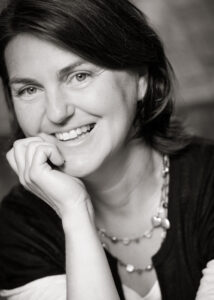
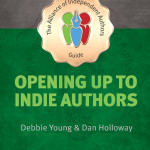
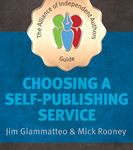
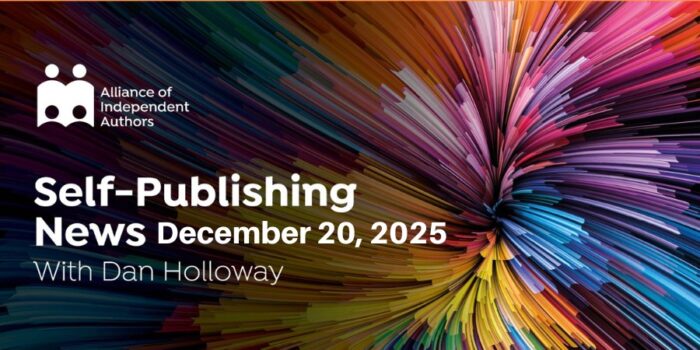
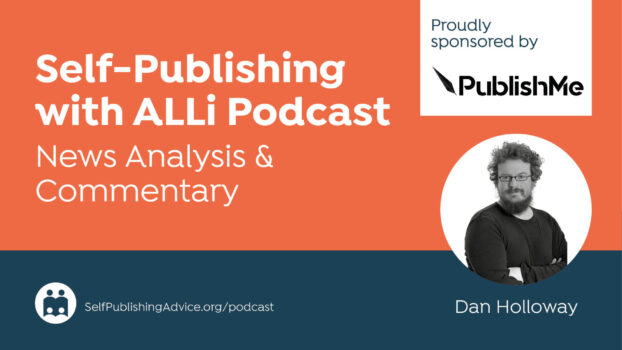

The part that scares me, partly because I believe I haven’t heard enough, and partly because I don’t believe it’s enough, is the part about marketing. How can my book sell if it is only available, yet not known publicly to exist?
[…] But times change. Indie authors are questioning whether the book is worth the money and shelf space. So do you really need the Writers’ and Artists’ Yearbook? […]
Forgive me for reminding us all that the standard response from publishers is ‘get an agent’ and from an agent ‘sorry, too many submissions’. Meaning that the WAYB is a waste of money for fiction writers. JK Rowling was rebuffed by scores of the graduates hired by publishers and agents to take a quick look at submitted manuscripts. Ditto Grisham. However, tastes are changing and I have decided that my next approach to a publisher or agent will be a book with a plot something like this: ‘Beautiful but feisty young chef Emma meets a new guy, Nathan, a top footie player. But is he human? He has strange friends and cold fingers. Then one day she opens an old cookery book and suddenly there appear multi-faceted aliens who fly away to invade Los Angeles. But one stays behind and approaches Emma…… Can Nathan rescue her before all is lost?’ Is there an agent reading this who would like more…….
I too used to buy the Writers & Artists Year book every year and would trawl through the agents first then, when I was completely disillusioned, I would start on the publishers. It is an excellent book but although it filled many hours when I would far rather have been writing, in the end it did not produce a publisher, nor an agent for me. Then came self-publishing and I found that I was back in control. No more grovelling letters and expensive packages (only hard copy was acceptable) to be sent to agents who could not always be bothered to reply (inundated with submissions is no excuse for not sending even a rudimentary acknowledgement). I suppose there is an element of ‘sour grapes’ as Mr Ash says, but really it is about how writing is valued today. A well-written, carefully edited, self-published book has more merit in my mind than some scrappy best-seller that a publisher has snapped up because he can see the £ signs ringing up. Thank goodness that there are writers out there who are prepared to self-publish regardless of what the traditional publisher thinks of them.
Let me see. The arguments is that because I don’t need a particular reference guide I should not buy one. Hasn’t this always been true? However, if I do want a reference guide to publishers and others in the publishing industry, it is available. Isn’t that a good thing? Can’t we live in a world that can accommodate differing avenues toward publishing?
Why is traditional publishing in a turmoil? I believe that publishing is doing quite well. Writers might not be, but writing and publishing are not the same fields.
As far as being in a vanguard, well, that might be true, but we are rather late to the party. Self publishing has been around for a very long time with an explosion in the ninetieth century because of changes in technology. And I think we should be honest, we are just taking advantage of changes in technology and distribution made by others.
I think as long as self-publishing conversation is simply thumbing its nose at the rest of the publishing industry, we are not going anywhere. It sounds more like sour grapes because we were not chosen and we are going to take our ball and go home. Is self-publishing a legitimate field and constrained by certain dynamics or its it just a club of disgruntled writers looking for opportunities to say we told you so? If we are able to act in our own interests, why aren’t other publishers? And what does it say about us when we practically use the same model as publishers, but then turn around and bash them? Every news article I read today about self publishing seems to be industry bashing–is that all there is to self publishing?
Personally, I think self publishing is a great avenue for creative people to earn a living, not a last resort because the traditional route did not work out or that I am afraid to try that route. I also think the traditional route is better suited to other creative professionals. It is good to have choice. The biggest issue today is sustainability. The current models of internet economics favor the big player that can aggregate earnings from a large number of free workers and that value comes from material value not intrinsic value.
Can we stop worrying about what other publishers are doing and concentrate on what we do?
Hi William, and thanks for your long and thoughtful comment. Yes, I agree the revolution is down to the technology that makes it relatively easy – and affordable – for people everywhere to self-publish their work. (In the early days, you had to be relatively time- and cash-rich to do so.) But it’s not only the rise of enabling technology that’s fuelled the rise of self-publishing, it’s also the hard work, dedication, perseverance and skill of those who write the books in the first place. Let’s hope it’s never only about technology, which suggests images of bestsellers written by robots – ugh!
I’m not sure whether your comment about “every news article about self-publishing seems to be industry bashing” is meant to apply to this post (or blog) or not? If not, disregard the rest of this comment – but if it is, I’d like to say that from where I’m standing, it doesn’t look at all as if ALLi is “thumbing its nose at the rest of the publishing industry”. Rather, we’re being fair and balanced in our approach.
As commissioning editor of this blog, it would have been easy (and less work!) for me to run Ian Sutherland’s article on its own, after he sent it to me on spec – it certainly struck a chord with me when I first read it (I have a W&A 2012 & a Writers’ Handbook 2006 on my writing reference bookshelf), and it would have read well as a light-hearted, enjoyable stand-alone piece.
But it would have been against the ALLi spirit NOT to offer W&A a fair opportunity to respond, which I think Alysoun has done very well.
ALLi is working hard to blur the lines and break down prejudice – in both directions – between trade and indie sectors, and when we draw attention to bad or exploitative practice as appropriate, it’s not for reasons of “sour grapes”, but because we care about the greater good and because we want an end to heartless exploitation of vulnerable indie authors, usually those new to the game who have not yet discovered better practice.
Hence our valuable Watchdog programme and our #publishingopenup campaign, which includes the “Opening Up To Indies” book (co-authored by me), the purpose of which is to build relationships and mutual understanding between the different parts of the publishing world, rather than deepen any divide.
However, those players who continue to ruthlessly exploit indies with unscrupulous contracts must expect us to spotlight them, through our Watchdog’s excellent guidebook “Choosing and Using Self-Publishing Services”, and through other means, including this blog, and through discussion at the highest level, whenever possible, to resolve issues in the most civilised way. In my view, that’s not industry bashing: that’s constructive campaigning that in the long term will benefit all concerned.
I look up at my bookshelf and see a thick yellow book I’ve not opened for a decade. It’s The Writers Handbook 2001, one I’d been advised to get instead of the Authorised Version, as it were: The Writers’ and Artists’ Yearbook. Once it was indeed to me as a fledgling writer, like its elder cousin, the Bible. But I’ve not opened it for a decade -ditto the Bible – until this morning that is, when I find it, like its twin and rival, crammed with useful information, including friendly but strangely outmoded articles like Peter Finch’s ‘So You Want Your Own Website.’ Yes, both books are still useful, though not essential. They take up shelf space, get dusty and have almost no retail value. Now that has been rectified, I gather. As Ian says the world is indeed a-changing and we at Alli are in the vanguard!
Love your comparisons!
Yes, we are indeed in the vanguard, David – exciting times! I bet old editions make very interesting reading, demonstrating just how far we’ve come.
I’m afraid that I only even bought the Writers’ & Artists’ Yearbook for the agents’ details. For me, it became redundant when I saw Agent Hunter, the database produced by Writers’ Workshop, which gives details and profiles for each agent working within agencies so that you could target them personally, including all of their social media handles. This was hugely helpful to research agents when I had the opportunity to meet them face to face. And at less than the cost of the yearbook, it was an absolute bargain. However, W & A have shown their support for indie authors. Their Self-Publishing in a Digital Age conference is a must for anyone thinking of taking the plunge.
I haven’t come across Agent Hunter before, Jane, (probably because I’ve never tried to find an agent!) But it sounds a great resource.
It it gratifying that Writers’ & Artists’ have recognised the indie movement, and I’ve been pleased to have had opportunities to guest post on their blog too. Their website and online presence is growing by the minute. I just wish they’d add a rating system to their services database, as ALLi has called for in the past – it’s unhelpful that they continue to list poor services on equal terms with great ones, and leave it to authors to find out the hard way whether their choice is any good or not. More about that issue here: http://uk.prweb.com/releases/2013/9/prweb11174540.htm. I’ll check out their next Self-publishing in a Digital Age conference – it sounds great.
So true, Debbie: they should mark what gives a really good service (Amazon star system – !!!) No, truly, it would be very helpful if they did do some kind of indication.
However, I have only ever consulted the W and AY in the library …. I guess that was because, while I was an agent-hunter, I was also too busy to write full-time. Then the indie possibility began to creep up, and when Baby, Baby was ready to be touted around agents/publishers, it was becoming obvious that the industry was in the process of change, and the way forward looked more hopeful than the way ‘back’ in a market which was struggling and responding by promoting books by well-knowns, celebrities, and edgy stuff.